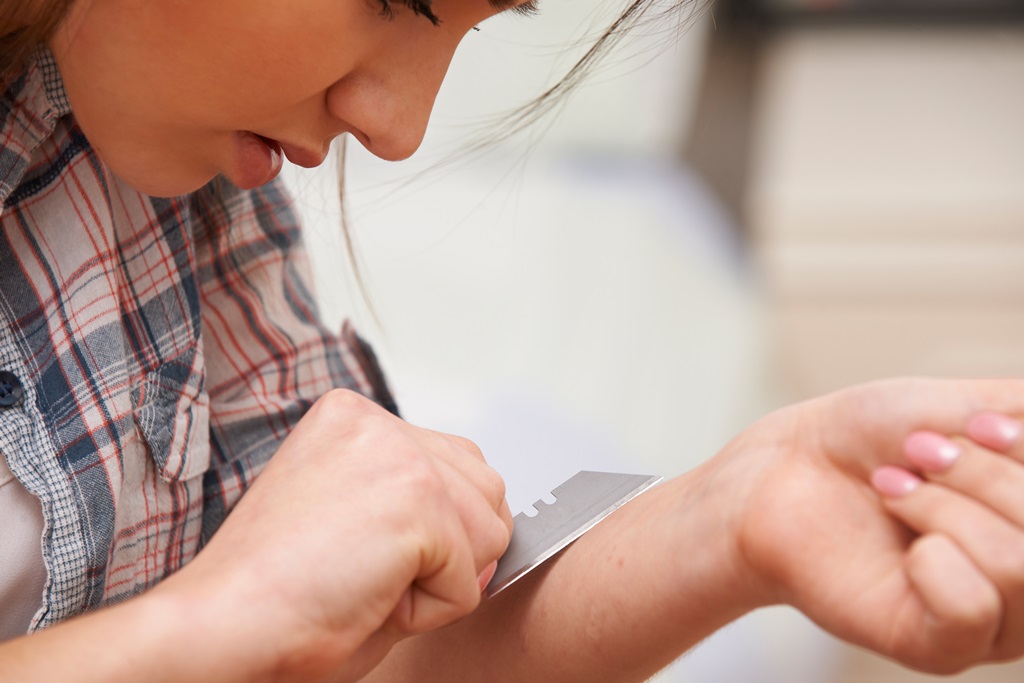- Study Says Most Parents Don’t Use Car Seats In Ride Share Vehicles Like Uber
- This 12-Year-Old Boy Is A Sophomore Aerospace Engineering Major!
- Fire Safety Experts Warn Of Hand Sanitizer Danger After A Mom and Kids Escape House Fire
- Recall Alert: Peaches May Be The Cause Of Salmonella Outbreak, 68 People Ill
- Summer Vacation In The Days Of COVID: Tips To Stay Safe
- How To Safely Grocery Shop During The Coronavirus Pandemic
- Michigan Teen With Vape-Related Illness Undergoes Double Lung Transplant
- Teen Kicks Off Anti-Vaping Campaign From Hospital Bed
- Teenager Receives Life Sentence For Strangling Sister To Death Over A Wi-Fi Password
- Toddler Falls To Death From 11th Deck of Cruise Ship
4 Things You Didn’t Know About Self-Injury & Teens


What is self-injury anyway? Self-injury also known as self-harm is when someone intentionally harms oneself (body tissue) without the goal of suicide (in most cases). Occasionally, someone will use the term “cutter” although it’s not just cutting that falls into the rubric of self-injury. If you have a teen who you suspect is harming him or herself or you know that one of your teen’s friend is cutting or other self-injurious behaviors, read on to learn some more.
Self-Injury: It’s Not All About Attention
In fact, most of the times it is not about attention, period. Certainly a person could self-harm with the goal of getting an individual to take his or her pain seriously, but for the most part, self-injurers are harming themselves not for attention at all. In fact, usually someone who self-harms will do everything he or she can to hide the scars from the injuries. So please, if your teen or a teen you know is harming oneself, don’t blow this off as a teenage attention ritual.
Self-Injury: Dealing With Emotional Pain
Your teen or any other teen, child or adult is self-harming because of emotional distress, not because he or she just enjoys bleeding or feeling pain. Oftentimes, the pain from a self-injury makes an individual feel “numb” and away from his or her original distressful thoughts.
As a teen, a friend of mine engaged in self-harming behaviors because she was dealing with the pain of poor self-image, rape and other acts of abuse. On one hand, she told me she felt she deserved the pain because she felt she was a “bad person” but on the other hand it distracted her from thinking about larger and more stressful emotions.
Self-Injury: Not Suicide, but Doesn’t Mean There is Not the Risk of Death
Bottom line: an injury could cause death and it is possible for someone to feel suicidal and also exhibit self-injurious behaviors.
Self-Injury: It’s More Common Than You Think
According to MentalHealthAmerica. Net, around two million people (mostly teenagers and young adults) self-injure. Out of these people, many of them are female but some are male, and the behavior is present amongst people of all races and backgrounds. In other words, self-injury is class and color-blind.








0 comments